Achieving Success in CNC Woodworking
Developing a Successful Cutting Direction Strategy
There are a number of factors that can affect the machining practices of wood in woodworking. One that comes up a lot for certain hardwoods is the cutting direction, specifically in relation to the grain pattern of the wood. Wood is an anisotropic material. This means that different material properties are exhibited in different cutting directions. In terms of lumber, there are different structural grades of wood related to grain orientation. If the average direction of the cellulose fibers are parallel to the sides of the piece of lumber, then the grains are said to be straight. Any deviation from this parallel line and the board is considered to be “cross-grain”. Figure 1 below depicts a mostly straight grain board with arrows indicating the different axes. Each of these axes exhibits different sets of mechanical properties. Because of these differences, one must be conscious of the tool path in woodworking and minimize the amount of cutting forces placed on the cutter in order to maximize its tool life.
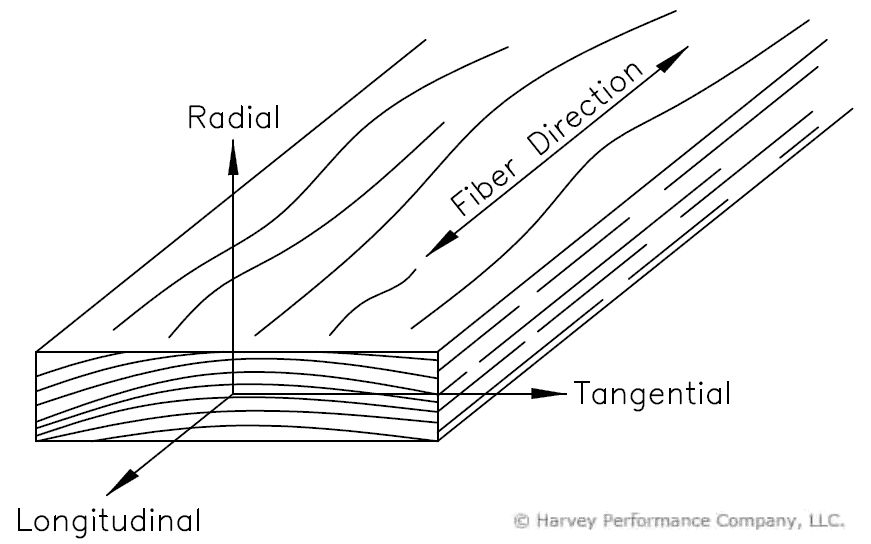
Cutting perpendicular to the grain is known as cutting “across the grain” in woodworking. In Figure 1 above, this would be considered cutting in the radial or tangential direction. Cutting parallel to the grain is known as cutting “along the grain” (longitudinally in terms of Figure 1). The closer you are to cutting at 90° to the grain of the wood in any direction, the larger the cutting force will be. For example, a tool with its center axis parallel to the tangential direction and a tool path along the longitudinal direction would have less wear than a tool with the same center axis but moving in the radial direction. The second type of tool orientation is cutting across more grain boundaries and therefore yields greater cutting forces. However, you must be careful when cutting along the grain as this can cause tear-outs and lead to a poor surface finish.
The Proper Formation of Wood Chips With CNC Woodworking
When cutting wood parallel to the grain, there are three basic types of chips that are formed. When cutting perpendicular to the grain, the chip types generally fall into these same 3 categories, but with much more variability due to the wide range in wood properties with respect to the grain direction.
Type 1 Chips
Type 1 chips are formed when wood splits ahead of the cutting edge through cleavage until failure in bending occurs as a cantilever beam. A large force perpendicular to the shear plane is produced, causing the wood ahead of the cutting edge to split, forming this tiny cantilever beam. When the upward force finally exceeds the strength of this tiny beam, it breaks off. These types of chips cause comparatively little wear compared to types 2 and 3, as the material is splitting before coming in contact with the pointed edge. End mills with either extremely high rake or very low rake angles often produce type 1 chips. This is especially true when machining against grain slopes that are greater than 25°. Woods with moisture content less than 8%form discontinuous chips and are at a higher risk of tear-out.
Type 2 Chips
Type 2 chips are the most desirable of the three types in terms of surface finish. They are a result of material failure along a diagonal shear plane, extending from the cutting edge to the workpiece surface. Type 2 chips form when there is a proper balance between the properties of the wood, cutting parameters, and cutter geometry. Woods with a moisture content between 8% and 20%have a much higher chance of forming continuous type 2 chips while leaving a good surface finish.
Type 3 Chips
The last type of chip forms when the rake angle of a cutter is much too low. In this scenario, the cutting force is almost parallel to the direction of travel. This causes a soft material, such as wood, to be crushed rather than sheared away, leaving a poor surface finish. Generally, the surface left behind looks like tiny bundles of wood elements, a surface defect commonly known as “fuzzy grain.” This type of chip occurs more frequently in softwoods as the crushing situation is compounded in low-density woods.

Extending Tool Life When Woodworking
Speeds & Feeds Rules of Thumb
There are several different categories of tool wear that occur when cnc woodworking. General rules of machining still apply as RPM has the greatest influence on wear rate. Over-feeding can increase tool wear exponentially and also cause tool breakage. As with most machining operations, a balance between these two is essential. If you are looking to increase your productivity by increasing your speed, you must increase your feed proportionally in order to maintain a balance that keeps the tool properly engaged in the material.
Proper Management of Heat
When cutting tools are exposed to high heat, they begin to wear even faster, due to corrosion. The cobalt binder within most carbide tools on the market begins to oxidize and break free of the cutting edge. This sets off a chain reaction, as when the binder is removed, the tungsten carbide breaks away, too. Different species of wood and types of engineered wood have different corrosive behaviors at high temperatures. This is the most consistent type of wear that is observed when machining MDF or particleboard. The wear is due to the chlorine and sulfate salts found in adhesives as this accelerates high-temperature corrosion. As with aluminum, when the silica content of a wood increases, so too does its corrosiveness.
Generally, increased tool wear is observed in wood with high moisture content. This trait is due to the increased electro-chemical wear caused by the extractives in wood., Moisture content in wood includes substances such as resins, sugars, oils, starches, alkaloids, and tannins in the presence of water. These molecules react with the metallic constitutes of the cutting tool and can dull the cutting edge. Carbide is more resistant to this type of wear compared to high-speed steel.
Best Coatings for Extended Tool Life in Wood
If you want a longer-lasting tool that will maintain its sharp cutting edge (and who doesn’t), you may want to consider an Amorphous Diamond coating. This is an extremely abrasive resistant coating meant for non-ferrous operations in which the temperature of the cutting zone does not exceed 750 °F. This coating type is one of Harvey Tool’s thinnest coatings, therefore minimizing the risk of any edge rounding and maximizing this edge’s durability.
Avoiding Common Woodworking Mishaps
Tear Out
Tear out, sometimes called chipped grain or splintering, is when a chunk of the wood material being machined tears away from the main workpiece and leaves an unappealing defect where it used to be. This is one of the most common defects when machining wood products. There are many different reasons that tear out occurs. Material characteristics are something to be considered. Tear out is more likely to occur if the grain orientation is less than 20°relative to the tool path, the moisture content of the wood is too low, or the density of the wood is too low. Figure 4 shows the grain orientation angle relative to the tool path. In terms of machining parameters, it can also occur if either the chip load, depth of cut, or rake angle is too high.
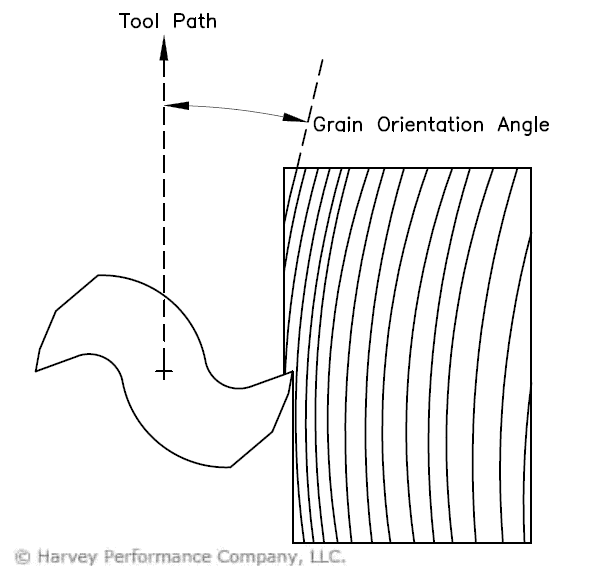
Fuzzy Grain Finish
Fuzzy grain looks like small clumps of wood attached to the newly machined face and occurs when the wood fibers are not severed properly. Low rake or dull cutting tools indent fibers until they tear out from their natural pattern inside, causing type 3 chips to form, resulting in a poor finish. This can be exacerbated by a low feed or depth of cut as the tool is not properly engaged and is plowing material rather than shearing it properly. Softer woods with smaller and lesser amounts of grains are more susceptible to this type of defect. Juvenile wood is known to be particularly liable for fuzzy grain because of its high moisture content.
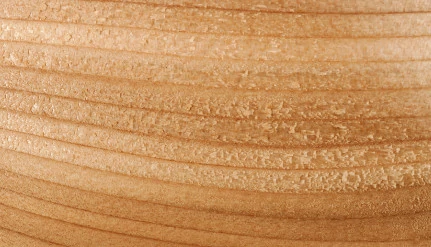
Burn Marks
Burn Marks are a defect that is particularly significant in the case of machining wood, as it is not generally a concern when machining other materials. Dwelling in a spot for too long, not engaging enough of the end mill in a cut, or using dull tools creates an excessive amount of heat through friction, which leaves burn marks. Some woods (such as maple or cherry) are more susceptible to burn marks, therefore tool paths for these types should be programmed sensibly. If you are having a lot of trouble with burn marks in a particular operation, you may want to try spraying the end mill with a commercial lubricant or paste wax. Be careful not to use too much as the excess moisture can cause warping. Increasing your tool engagement or decreasing RPM may also combat burn marks.
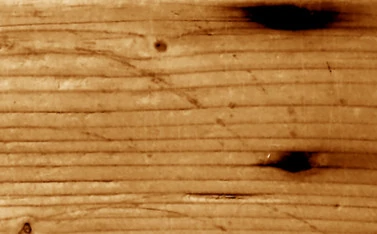
Chip Marks
Chip marks are shallow compressions in the surface of the wood that have been sprayed or pressed into the surface. These defects can swell with an increase in moisture content, worsening the finish even more. This type of blemish is generally caused by poor chip evacuation and can usually be fixed by applying air blast coolant to the cutting region during the operation.
Raised Grain
Raised grain, another common defect of woods, is when one or more portions of the workpiece are slightly lower than the rest. This blemish is particularly a problem when machining softer woods with dull tools as the fibers will tear and deform rather than be cleanly sheared away. This effect is intensified when machining with slow feeds and the wood has a high moisture content. Variations in swelling and shrinking between damaged and undamaged sections of wood exacerbate this flaw. It’s for this reason that raised grain is a common sight on weather-beaten woods. Work holding devices that are set too tight also have a chance of causing raised grain.
Differentiating Harvey Tool Wood Cutting & Plastic Cutting End Mills

https://www.harveytool.com/products/material-specific-end-mills/woodMachinists oftentimes use Plastic Cutting End Mills for woodworking, as this tool has very similar internal geometries to that of an End Mill for Wood. Both tools have large flute valleys and sharp cutting edges, advantageous for the machining of both plastic and wood. The main difference between the Harvey Tool plastic cutters and the woodcutters is the wedge angle (a combination of the primary relief and rake angle). The woodcutter line has a lower rake but still has a high relief angle to maintain the sharpness of the cutting edge. The lower rake is designed to not be as “grabby” as the plastic cutters can be when woodworking. It was meant to shear wood and leave a quality surface finish by not causing tear-out.
Harvey Tool’s offering of End Mills for Wood includes both upcut and downcut options. The upcut option is designed for milling natural and engineered woods, featuring a 2-flute style and a wedge angle engineered for shearing wood fiber materials without causing tear out or leaving a fuzzy grain finish. The downcut offering is optimized for milling natural and engineered woods and helps prevent lifting on vacuum tables.
For more help on achieving a successful machining operation, or more information on Harvey Tool’s offering of End Mills for Wood, please contact Harvey Tool’s team of engineers at 800-645-5609.


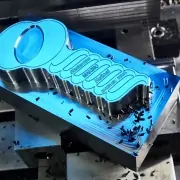
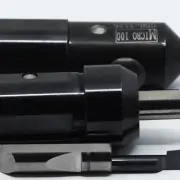
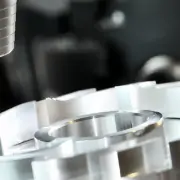
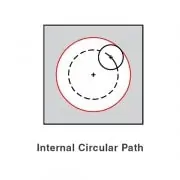

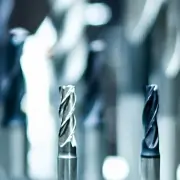
CNC woodworking takes time and skill to properly do it. These guides would really help to people that are planning to use CNC.
Hey mate,
I’m searching for this kind of in-depth article on woodworking CNC routers. As a beginner, I don’t know that much about routers. This article is really helpful to enrich my skill & knowledge.
Thanks for sharing this information and it deserves to be shared, I would like to share it with my friends!
This is great. A lot of people will learn from this blog. This guides are spot on. Thanks for sharing.
A plywood CNC machine is an essential tool in woodworking. This material is one of the most popular and most processed materials. CNC plans are necessary to make the most of these advantages while minimizing their disadvantages. A CNC router can perform a variety of tasks, from a simple two-dimensional cut to a complex three-dimensional cut.